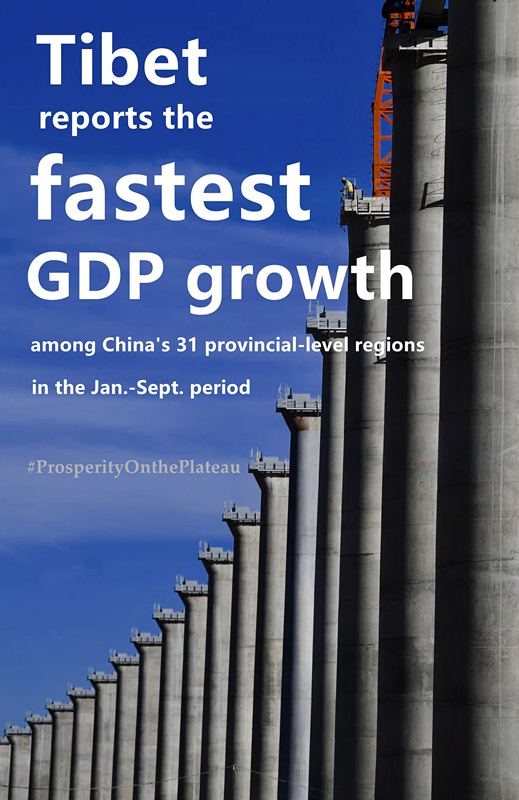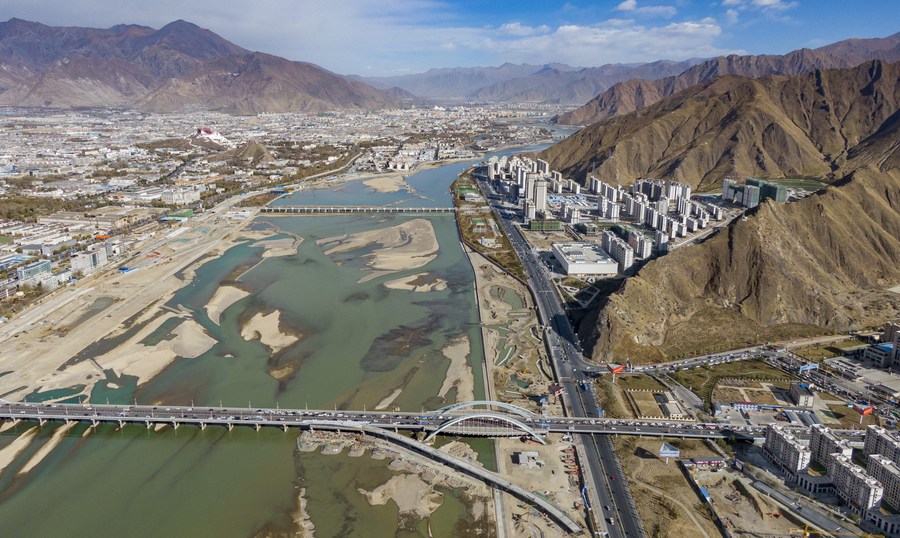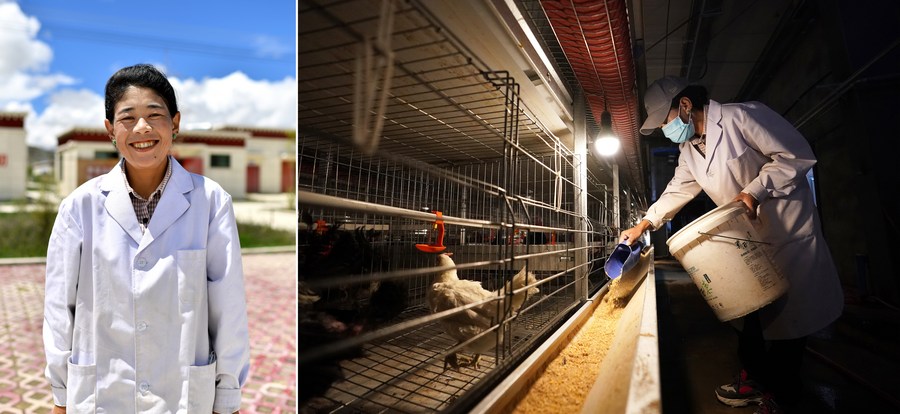Tibet Autonomous Region in SW China reported the fastest economic growth among China's 31 provincial-level regions in the first three quarters of the year. We have compiled the facts and figures behind this remarkable achievement.

LHASA, Nov. 30 (Xinhua) -- Tibet Autonomous Region reported the fastest economic growth among China's 31 provincial-level regions in the first three quarters of the year, according to local authorities.
Tibet's gross domestic product (GDP) totaled 130.8 billion yuan (about 19.5 billion U.S. dollars) in the January-September period, up 6.3 percent year on year.

An aerial view of Lhasa City, capital of southwest China's Tibet Autonomous Region, Nov. 23, 2020. (Xinhua/Purbu Zhaxi)
Despite the COVID-19 pandemic, Tibet has seen rapid growth this year. The remote region in the southwest of the country reported 1.0-percent growth in the first quarter, the only Chinese mainland provincial-level region to register positive growth. With a 5.1-percent GDP rise in the first half of the year, Tibet topped the 16 Chinese mainland provincial-level regions that reported positive growth.

Photo taken on Nov. 24, 2020 shows the Lhasa Wanda Plaza in Lhasa City, capital of southwest China's Tibet Autonomous Region. The large commercial complex opened on Aug. 8, 2020, and is the first of its kind in Tibet. (Xinhua/Jigme Dorje)
Emerging industries -- including plateau biology, tourism and culture, green industries, clean energy, modern services, border trade logistics, and the high-tech and digital industry -- empowered the region's economy, according to the regional bureau of statistics and the Tibet survey office under the National Bureau of Statistics.
From January to September, the high-tech and digital industry's added value rose by 37 percent from the same period last year. The pharmaceutical sector posted a surge in year-on-year growth of 36.6 percent.
Ningsuan Technology Group is building an 11.8-billion-yuan cloud computing data center in Lhasa, the regional capital. Once complete, it will be the highest-altitude data center in the world.
The project will back-up data for video rendering, autonomous driving, and distance-learning.
"Since we started the project in Tibet, we have received extensive support in areas such as construction and procedures," said Jiang Ning, president of the company, "This will expedite construction of the project."

Photo taken on May, 14, 2020 shows strawberries grown in Nyingchi, southwest China's Tibet Autonomous Region. (Xinhua/Li Xin)
With strict epidemic control and prevention measures, Tibet has reported just one confirmed COVID-19 case since the outbreak. Accordingly, the resumption of work and production has accelerated.
With the recovery of tourism, the remote plateau region received 32.01 million tourists during the first three quarters, with tourism revenue hitting 33.49 billion yuan.
Healthy economic development has positively impacted people's lives. In the first nine months of the year, 38,000 new urban jobs were created. During the same period, the registered unemployment rate sat below 4 percent. Moreover, the growth rate of Tibet's per capita disposable income ranked first among all provincial regions in Chinese mainland, with the per capita disposable income of urban residents increasing by 9.8 percent to 31,100 yuan.

Combo photo shows a spring plowing ceremony (top); and a fashion show in Porgor Street in Lhasa City, southwest China's Tibet Autonomous Region. (Xinhua/Purbu Zhaxi)
On Oct. 15, Wu Yingjie, Communist Party of China (CPC) chief of the region, said Tibet had achieved a "major victory" in alleviating poverty.
By the end of 2019, Tibet had lifted 628,000 people out of poverty, and removed 74 county-level areas from the poverty list.

In this combo photo taken on Aug. 1, 2020, the left part shows Zhoigar, a villager of Gyiru in the township of Quxar, Lnaze County, Xigaze, southwest China's Tibet Autonomous Region; and the right part shows Zhoigar works in a modern chicken farm in Lnaze County, where she earns 4,000 yuan a month. (Xinhua/Zhan Yan)
"Over the past five years, Tibet has led the country with an annual average GDP growth rate of 9.3 percent," said Tubdan Kezhub, a professor with Tibet University, "This momentum will help close the economic gap between the region and other parts of the country." ■



